Summertime, is, for me, full of bumps, bruises, cuts, scrapes, bites and scratches. It’s also a very good description of a long-ago hunting trip in Texas, but you get the point.
Get more active; get more “opportunities” to test a variety of first aid and safety gear.
Thankfully, I’ve had some very good gear to help me minimize both the opportunities for injury and the injuries themselves (glad I’m not talking about testing knives or guns here).
It’s never a bad idea to travel with some first aid gear, even if you’re only dashing out on errands. Having learned from experience that fast food napkins don’t do much for cuts or scrapes, I now carry a couple of BandAids and a tiny pack of antiseptic cream wherever I go.
Having something is always better than having nothing. The car has more gear if needed.
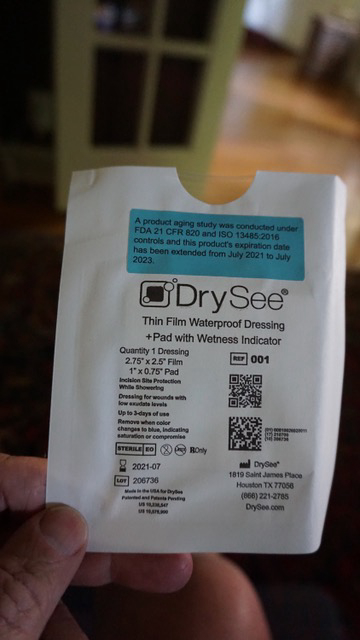
Dry See is exactly what it implies: a bandage (above) that covers and protects a wound with a color-changing material (below) that lets you know if it’s become moist. If the inner bands shows blue, it’s time to change the bandage.
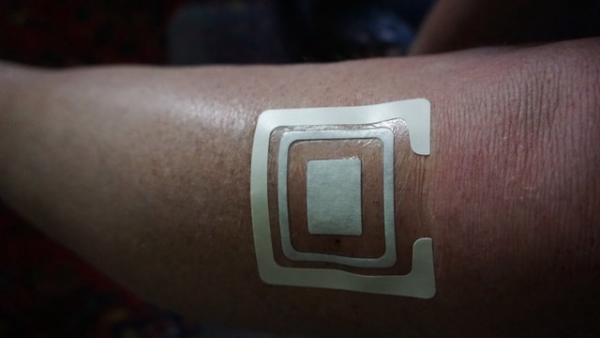 |
With a scorcher like this summer, nothing’s as refreshing as a swim. Ocean, lake, creek or pool, water’s restorative in oppressive heat.
Not being able to get in the water because of a cut or stitches (don’t ask) is absolutely zero fun.
That’s why I eagerly agreed to try a new bandage designed to protect wounds and permit swimming. As the accompanying material explained, Dry See is a “thin film waterproof dressing plus pad with Wetness Indicator.”
Essentially it’s a clear, sterile, waterproof patch to cover your boo-boo. It also has a telltale strip inside the patch to let you know- quickly - if you’ve penetrated the moisture barrier.
That’s a rudimentary explanation, because Dry See is also capable of letting you know if a wound is draining (some need to do that) versus having gotten wet. If the center indicator is blue and the outer indicator’s still white, the wound’s draining correctly and there’s been no water in the wound.
When the outer indicator’s blue, it’s time to change the bandage- before water gets into your wound. Simple stuff, no?
I used my samples after having a small run-in with a metal table. A bit of topical antiseptic, a Dry See on top and I was back underway- and underwater- with no issues. The bandage stayed in place-and watertight- for two full days. I actually healed before it leaked.
If you’re the family triage specialist, you should add them to your kit. They’re available come in 2x2, 4x4 and 5x10 sizes and can be purchased on the Dry See website. Prices start at $19.95 for a six-pack of 2x2s.
And an ounce of prevention does beat a pound of cure. Especially when it comes to the damage we inflict on our largest single organ-our skin.
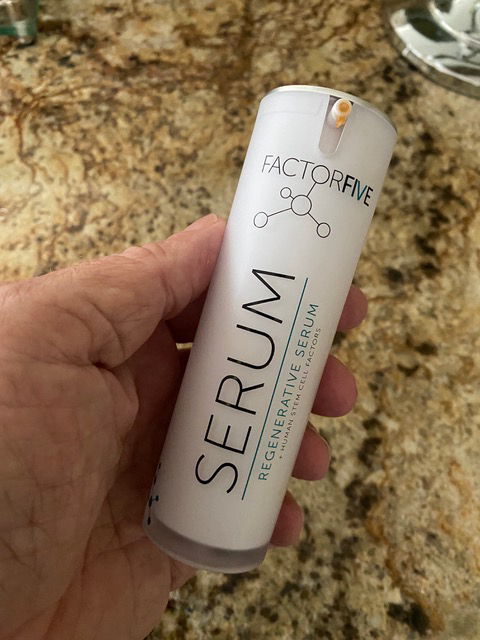
Not something I would have ever tried without a real effective PR “pitch,” Factor Five’s Serum seems to have helped keep my usual summer skin damage at bay. No, it’s not sunscreen.
|
When you’re waging a never-ending fight against melanoma, sun protection’s no joke.
For me, that’s a fact of life. Hats and sunscreen aren’t seasonal option. Consequently, my face (and bald dome) are constantly coated with sunscreen and covered by hats. Neither are soothing or restorative, but either preferable to more surgery. My restorative skin care “regimen” has been limited, at best.
That’s before a PR “pitch” invited me to try Factor Five's Serum. This Regenerative Serum, I was told, uses adult stem cells, copper peptides and other 100% natural, biological products to help stimulate the skin.
I was intrigued, and agreed to give it a shot.
Having never been big on cosmetics, I can’t speak to the gazillion other potions that promise to reverse aging to the point Benjamin Button calls you for aging advice. But I do know that after a few weeks in the summer sun, I can see a difference -for the better. Fewer sunspots, no rough patches of skin, and maybe even a couple less wrinkles on my bald dome than before.
For a guy whose skin is almost always irritated, that’s a significant win.
Factor Five Serum is decidedly not a product I’ll be gifting my shooting buddies, but it’s definitely something to consider if you’re trying to avoid that “tired old boot” look we sometimes try to pass off as being one sign of “ a rugged outdoorsmen”.
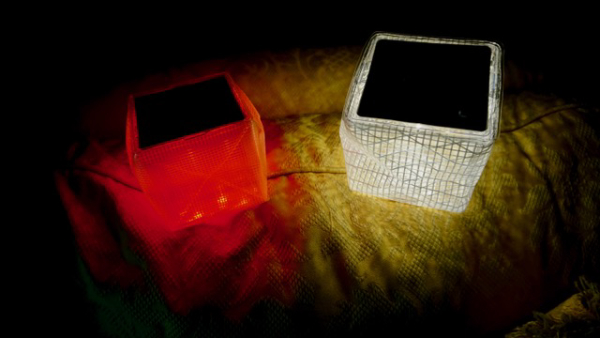
Solar Puffs (top) are small, but offer lots of light in a compact package. A Solar Puff with red LEDs (middle) preserve my night vision while preventing my repeating my collision metal coffee table. It allowed me to see my camera controls while photographing the Super Moon (bottom).
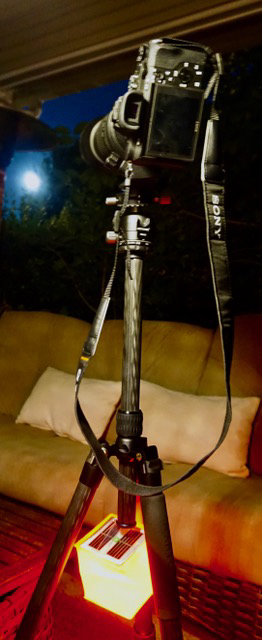 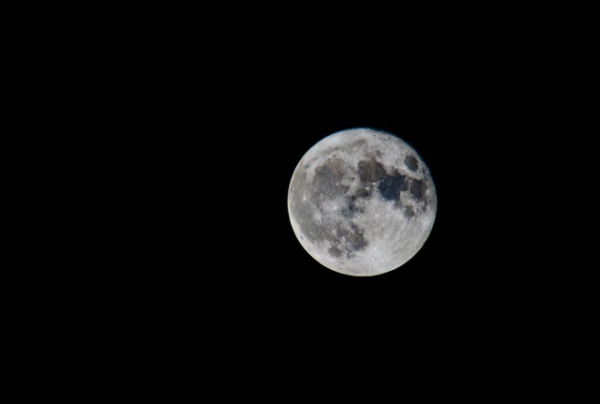 |
As a photographer, I’ve enjoyed the “super moons” this summer. And I’ve stayed up well past my bedtime, hoping for a memorable shot. In fact, navigating around without a light during a super moon is how I created the testbed for the Dry See bandage.
For second moon, I decided to give a trio of test items their opportunities to shine (excuse the pun). Solight Design had sent me a trio of their portable, collapsible solar lanterns for testing. They contain a solar panel, rechargeable lithium-polymer battery and an array of LEDs inside what might best be described as an origami-like cube.
The story behind these little lanterns is compelling. They’re the result of an experiment to incorporate solar power into daily living. Co-founder Alice Chun, an architecture professor, challenged students in her design studio class at Columbia University’s Graduate School for Architecture to come up with a way to bring a solar solution to disaster relief. They first came up with an inflatable SolarPuff lantern. Later designs did away with the inflation idea, incorporating flexible, recyclable TPUs to create collapsable solar lanterns.
Today, their lanterns range from 45 lumens in their mini-Twilight up to 40-90 lumens in the SolarPuff LS model. The company also makes a Solar Lantern-Power Bank (QENN) that offers 600 lumens of light along with a power bank capable of powering cellphones.
I’ve used the QENN model as a campsite area light -while simultaneously charging my cellphone via the 4,000 mAh power bank.
If you’re looking for lighting without having to worry about lugging around extra batteries (looking at you, hikers and kayakers), they’re waterproof, durable and perform exactly as promised.
They’re must-haves on the equipment list for a much-anticipated photo/hiking trip to Death Valley, California, this fall. And that trip has opened my horizons when it comes to advances in everything from lightweight tripods to adaptable backpacks and hydration systems. But all that stuff can wait until after the trip. We never write about products until after we’ve actually used them.
As always, we’ll keep you posted.
— Jim Shepherd